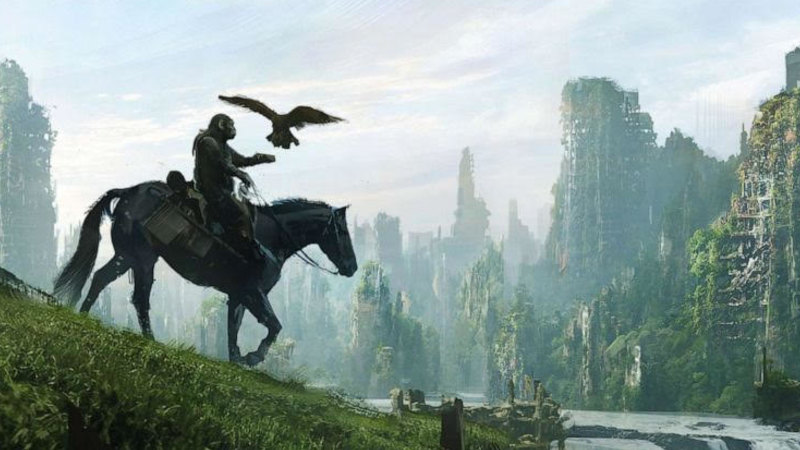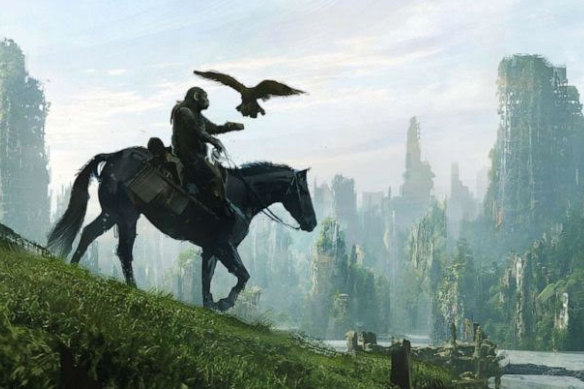Drama still booming Down Under, but a downturn could be coming

Save articles for later
Add articles to your saved list and come back to them any time.
Australia’s boom in scripted film and TV production has continued, with local and foreign film and TV spending $2.34 billion on comedy, drama and children’s content in 2022-23.
Though down marginally on the record $2.43 billion spent a year earlier, the latest result is the second highest recorded in the 33 years that Screen Australia and its predecessors have been collating the figures for the annual Drama Report.
Horror film Talk To Me was a homegrown global smash.
“I’m honestly surprised,” says outgoing chief executive Graeme Mason, who finishes his 10 years at the helm of the federally funded screen agency next Friday.
“Last year was just so huge I thought we’d come off the boil quite substantially. And we haven’t.”
The annual drama report captures spending on scripted content across broadcast television, streaming, video on-demand and theatrical feature films by both Australian and foreign – primarily Hollywood – producers and studios.
The record result in 2021-22 was driven in large by a COVID-spurred surge in Hollywood productions shooting here, as well as increased spending by the streamers ahead of expected local content quotas.
This year’s result suggests it may have been more than a mere aberration.
The growing post-production and visual effects sector was a major contributor this year, worth a record $714 million over the financial year.
The report does not reflect expenditure on reality and light entertainment programming, or news, current affairs and sport. It also does not capture activity in the short-form scripted space, despite the fact Screen Australia has invested widely in content for platforms such as YouTube, TikTok and Snapchat in a bid to connect up-and-coming content creators with audiences less inclined to consume via more traditional avenues.
“It’s fantastic to look at the incredible success of the Philippou twins’ film Talk To Me globally,” says Mason. “But it’s just as important to remind everybody that we’ve been funding them as Racka Racka since 2015, to do YouTube content that resonated unbelievably with a huge audience.”
Screen Australia’s willingness to back creators in spaces other than film and TV is just one of the changes Mason has seen in his decade in the job. In 2013-14, the drama report recorded expenditure of $837 million in the drama sector. That sum has almost tripled this year and last.
Rob Sitch as infrastructure boss Tony in Utopia. The comedy’s fifth season was made during the year.Credit: Hwa Goh/ABC
Though spending by the free-to-air networks is up this year – to $277 million – the broadcast landscape is almost unrecognisable compared to when he started.
“Ten years ago, Netflix was still basically in the DVD business,” Mason says.
The emergence of Australia as a viable and regular destination for big-budget Hollywood productions has been hard-won, predicated on incentives and tax rebates, as well as world-class cast and crew and unique locations.
The $1.22 billion spent by foreign film and TV productions last year – on titles including Ricky Stanicky, The Fall Guy and Kingdom of the Planet of the Apes – was also a record.
But there is reason for caution in the latest numbers too, with ample evidence of the fragility and cyclical nature of the industry.
Spending in Victoria was down 45 per cent, largely due to the collapse of the big-budget Apple TV series Metropolis. After a bumper year in which it hosted Deadloch and Bay of Fires, Tasmania had a sluggish 2022-23. South Australia, which is on hold for Mortal Kombat 2, also saw a drop-off.
The fourth instalment in the reboot of the Planet of the Apes series was filmed in Australia.
“It really highlights the need for everybody to look at the screen sector as an ecosystem,” says Mason.
“The Australian features number is down in terms of dollars, but that’s because there were a couple of 800-pound gorillas last year [including George Miller’s Furiosa, rumoured to be the most expensive film ever made in Australia].
“But on the other side of the ledger, the inbound features were huge. So when you look across everything, the system is still very healthy. But it’s our job and the government’s job to try and make sure each part of it is getting its moment … we need all bits of it to be firing.”
And Screen Producers Australia chief executive Matthew Deaner urges a critical reading of the numbers, no matter how impressive they might look.
“When I look at the Drama Report figures, my first question will be ‘who is benefiting here?’ he says.
“I wish the answer was ‘Australia’, but that’s not the case. Australian creatives and businesses simply do not sit at the negotiating table [with foreign-owned streamers and broadcasters] with anything near equal bargaining power.”
Next year will almost certainly see a significant decline across the board, with the tightening outlook for the streaming sector and the ongoing impacts of the Hollywood strikes likely to result in a much lower figure for incoming chief executive Deirdre Brennan to announce in 12 months’ time.
But Mason remains bullish overall.
“I think there really is more capacity for growth because, bizarrely, Hollywood still doesn’t quite get us,” he says. “Screen Australia and other entities do a lot of work to make sure that America realises we are only one plane ride away. It’s not that much different than going to London.”
“Even in a slightly shrinking market, we could get a larger share of the pie,” he adds. “I don’t think we’re at the peak yet for Australia.”
Find out the next TV, streaming series and movies to add to your must-sees. Get The Watchlist delivered every Thursday.
Most Viewed in Culture
From our partners
Source: Read Full Article


